 Bolivia : Safety by City
Bolivia : Safety by City
Bolivia doesn’t just sit in South America; it straddles it.
From the high-altitude chaos of the Andes to the steamy edge of the Amazon Basin, this landlocked country crams in more diversity than its size would suggest.
It’s where lunar salt flats meet rainbow-hued lagoons, and where colonial streets collide with Indigenous markets in a dizzying blend of old and older.
Long before Bolivia became a republic in 1825, it was home to powerful civilizations like the Tiwanaku and later a vital part of the Inca Empire.
Spanish colonization followed, bringing silver mining and upheaval, and Bolivia has been navigating its complex identity ever since.
Today, travelers come for the extremes.
About a million visitors a year hike through surreal landscapes like Salar de Uyuni, the world’s largest salt flat, or take on the dizzying heights of La Paz, one of the highest cities on Earth.
There’s the wild frontier of the Amazon jungle, the glassy stillness of Lake Titicaca, and the painted mountains of the Eduardo Avaroa reserve.
Whether you’re chasing adrenaline, solitude, or just a good story, Bolivia delivers it in Technicolor.
When it comes to safety, there are some black and white regional risks we need to go through.
Warnings & Dangers in Bolivia

OVERALL RISK: LOW
Bolivia's overall risk is the low end of medium. If you avoid the most dangerous places and keep your guard up, experienced travelers likely won't have any issues here.

TRANSPORT & TAXIS RISK: MEDIUM
This is a medium risk all the way around. Taxis should only be used if they are licensed. Look for "radio taxis," which are fleets organized through a central hub. Buses can be dangerous, and bus stations are some of the highest crime areas of Bolivia. Even driving yourself requires four-wheel-drive vehicles outside of cities.

PICKPOCKETS RISK: HIGH
Pickpocketing should be treated as a high risk, especially if you're in crowded tourist spots or on overnight buses. There are even reports of crooks complaining of being robbed and looking for someone to hear their sob story, only to rob you in return.

NATURAL DISASTERS RISK: MEDIUM
Bolivia faces several natural disaster risks, especially during the rainy season from November to March. Flooding, landslides, and road washouts are common in lowland and mountain areas. Earthquakes can occur, but are typically mild. Treat this as a medium risk, especially if you're heading to higher altitudes.

MUGGING RISK: LOW
Violent robberies against tourists aren't that common, but there is a class of crime called express kidnappings. This is when people are taken against their will and forced to withdraw money from an ATM. That's more likely to happen in certain areas, so keep reading to learn the places to avoid.

TERRORISM RISK: LOW
The risk of traditional terrorism is low, but there are drug cartels and other organized crime operators in Bolivia. Always keep your guard up, heed warnings of places to avoid, and don't fight back if confronted.

SCAMS RISK: MEDIUM
Scams and crime go hand in hand in Bolivia. Fake police officers demanding money, thieves who prey on your sense of kindness only to steal from you, and shady taxi drivers who plan to rob you once you're inside are all too common. This is a medium risk and should be taken seriously.

WOMEN TRAVELERS RISK: LOW
Women, especially solo travelers, should stick with groups and avoid walking around at night. Don't go into the wilderness alone. Expect some degree of catcalling or other verbal abuse. Avoid taking drinks from strangers and don't fall for any romance enticements on social media.

TAP WATER RISK: HIGH
Tap water in Bolivia isn’t considered safe to drink, even in major cities. Contamination risks are high due to outdated infrastructure and inconsistent sanitation. Stick to bottled or properly filtered water for drinking and brushing your teeth. Avoid ice and raw foods washed in tap water to reduce the risk of illness.
Safest Places to Visit in Bolivia
There are a lot of websites that offer travel information about Bolivia, but I can’t get most of them to provide a secure connection.
The only website that worked for me was southamericatourism.com/destination/bolivia.
La Paz grabs attention with its cable car system, which doubles as public transit and a way to take in the sprawling city from above.
The Witches’ Market is packed with strange and fascinating local remedies, while the National Museum of Ethnography and Folklore is worth a quiet hour or two.
Nearby, Valle de la Luna offers an easy hike through an eroded rockscape that looks more like a movie set than a real place.
Salar de Uyuni is the country’s headliner.
It’s the world’s largest salt flat and becomes a mirror after rain.
Most people base themselves in Uyuni town and book a jeep tour that loops through high-altitude deserts, surreal lagoons, and cactus-covered islands.
In Sucre, Bolivia’s constitutional capital, the whitewashed colonial center is a UNESCO World Heritage Site.
Relax in the plazas or visit the Textile Museum for a closer look at Indigenous weaving traditions.
Cochabamba is more of a local city, but it has one of South America’s largest Jesus statues and a great food scene.
And if you’re headed to Lake Titicaca, the Isla del Sol hike offers a peaceful way to explore Inca ruins with postcard views along the way.
Places to Avoid in Bolivia
While most of the country is ranked as Level 2: Exercise Increased Caution by government travel advisories, a few regions come with higher risks.
The Chapare region is one of them.
Due to violent crime and limited local support, even U.S. government staff need special authorization to go there, and emergency assistance may not be available if things go wrong.
Elsewhere, tourists have been targeted while hiking in scenic areas near La Paz (like Muela del Diablo), Rurrenabaque, the Yungas, and stretches of the Bolivian Andes, including the Inca Trail.
Only explore them with a trusted guide and avoid venturing out solo.
Spiritual cleansing ceremonies, especially those involving hallucinogens like ayahuasca or San Pedro, are another risk.
These aren’t regulated or licensed, and there’s no way to vet the safety of the experience.
Safety Tips for Traveling to Bolivia
- Tourist police are available in cities like La Paz and Sucre, but they’re nearly nonexistent in rural or remote areas. For emergencies, dial 110 for police or 911 for general help. Don’t count on a fast response outside city centers. If something happens off the grid, help might take hours or days.
- Bolivia doesn’t have a streamlined public alert system like the U.S. or Canada. If you want real-time updates about disasters, road closures, or strikes, sign up with your country’s embassy for travel alerts. Following local news sources on social media can help, too, especially in Spanish.
- You can drive in Bolivia with an international driving permit and your valid license. But fair warning: driving here isn’t for the faint of heart. Roads in rural areas are narrow, unpaved, and often shared with llamas. Rainy season landslides and limited signage make navigation tricky. Rent a car only if you’re confident.
- Spanish is the main language, and outside of hotels or tour companies, you won’t find many English speakers. A translation app helps, but learning a few basic Spanish phrases will go a long way, especially in markets or when arranging transport. Expect blank stares if you rely solely on English.
- There are no mandatory vaccines to enter Bolivia unless you’re coming from a yellow fever country. That said, the yellow fever vaccine is highly recommended if you’re heading to jungle areas like Rurrenabaque. Hepatitis A, typhoid, and routine immunizations should be up-to-date, especially if you plan to eat street food.
- La Paz sits at about 12,000 feet, and parts of the Andes reach 15,000 feet or higher. Altitude sickness is real and can hit hard within hours. Go easy in your first few days. Avoid alcohol, stay hydrated, and give your body time to adjust. Coca-tea helps, but it’s not a cure.
- Bolivian police can legally detain foreign travelers until they verify their immigration status. This doesn’t happen often, but you don’t want to be the exception. Always carry a passport or a copy of it with your visa stamp or entry card. If you leave it at your hotel, at least have a photo on your phone.
- You can’t just take a boat across Lake Titicaca and expect to stroll into Peru. Border controls are enforced, and skipping immigration can lead to fines or worse. Use official border crossings near Copacabana and make sure you get stamped in and out of each country properly.
- Public restrooms usually charge a small fee (think pocket change), so keep coins handy. Also, most places won’t have toilet paper, soap, or even a toilet seat. Bring your own TP, hand sanitizer, and a sense of humor. Always use the restroom before you leave the hotel or hostel.
- Yes, that’s a person in a zebra costume helping you cross the street. It’s part of a traffic safety program in La Paz that uses costumed volunteers to promote pedestrian awareness. They’re legit, friendly, and often more effective than traffic lights. Don’t be alarmed. Just smile and follow their lead. Trying to cross on your own is dangerous, since drivers aren’t too concerned about stopping for pedestrians.
So... How Safe Is Bolivia Really?
Government advisories for Bolivia from the United States, the United Kingdom, Australia, and Canada are pretty consistent with the risk ratings here.
Most governments use a four-level rating scale.
One is the lowest, generally meaning to use standard precautions.
Four is the highest, which firmly requests that you avoid all travel.
For Bolivia, most of the country falls squarely under Level 2: Exercise Increased Caution.
The places to avoid, noted earlier in this article, are under Level 3: Avoid All But Essential Travel.
That includes the Chapare Region.
These warnings aren’t just bureaucratic red tape.
Bolivia’s tourism industry took a serious hit in 2024.
Protests, road blockades, and political tension caused many travelers to rethink their plans.
Reports of crime in tourist areas and spotty protection for visitors didn’t help either.
Without serious recovery efforts, it’s a situation that could keep trending in the wrong direction.
“We must try to ensure that the radical part does not go around suffocating or frightening, and may carry out blockades or demonstrations.
Let’s stop harming the country,” Vice Minister of Tourism Ive Flores said in 2024.
Whether the country can get its tourism industry in a better position will determine if it’s safer to visit in the future or if people keep flocking to other, less crime-ridden South American countries.
How Does Bolivia Compare?
| Country | Safety Index |
|---|---|
| Bolivia | 57 |
| Djibouti | 38 |
| Croatia | 83 |
| Mexico | 65 |
| France | 64 |
| Puerto Rico | 34 |
| Somalia | 16 |
| United Kingdom | 77 |
| Peru | 50 |
Useful Information

Visas
Most travelers from the U.S., Canada, and the EU can enter Bolivia without a visa for up to 90 days per year. However, U.S. citizens sometimes need to pay a reciprocity fee or show proof of travel plans. Requirements can change, so double-check with the Bolivian consulate before booking anything.

Currency
Bolivia uses the Boliviano (BOB). Cash is still king, especially in rural areas or markets. ATMs are available in most cities, but don’t count on cards being accepted outside of hotels or larger restaurants. Bring small bills when possible, since vendors often can’t break large notes. Plus, you'll need coins to use the toilets.

Weather
Bolivia’s weather varies wildly by region and altitude. In the highlands (La Paz, Uyuni), expect chilly nights year-round. The lowlands (like Santa Cruz) stay warm and humid. The rainy season runs from November to March, which can make travel tricky in some areas. The dry season, from May to October, is best for outdoor exploring.

Airports
The main international gateway is El Alto International Airport near La Paz, which is one of the world’s highest airports at over 13,000 feet. Other major airports include Viru Viru in Santa Cruz and Jorge Wilstermann in Cochabamba. Expect delays, altitude effects upon arrival, and limited direct international flights outside South America.

Travel Insurance
Between altitude sickness, road delays, and unpredictable weather, travel insurance will come in handy in Bolivia. Make sure your policy covers medical evacuation, especially if you’re heading to remote areas. For the more risky activities, like taking the Death Road Ride, you might want to invest in adventure insurance.
Bolivia Weather Averages (Temperatures)
Average High/Low Temperature
| Temperature / Month | Jan | Feb | Mar | Apr | May | Jun | Jul | Aug | Sep | Oct | Nov | Dec |
|---|---|---|---|---|---|---|---|---|---|---|---|---|
| High °C |
28 | 27 | 27 | 27 | 25 | 24 | 25 | 27 | 28 | 29 | 29 | 28 |
| Low °C |
17 | 17 | 16 | 15 | 12 | 10 | 9 | 11 | 13 | 15 | 16 | 17 |
| High °F |
82 | 81 | 81 | 81 | 77 | 75 | 77 | 81 | 82 | 84 | 84 | 82 |
| Low °F |
63 | 63 | 61 | 59 | 54 | 50 | 48 | 52 | 55 | 59 | 61 | 63 |
Bolivia - Safety by City
| City | Safety Index |
|---|---|
| La Paz | 52 |
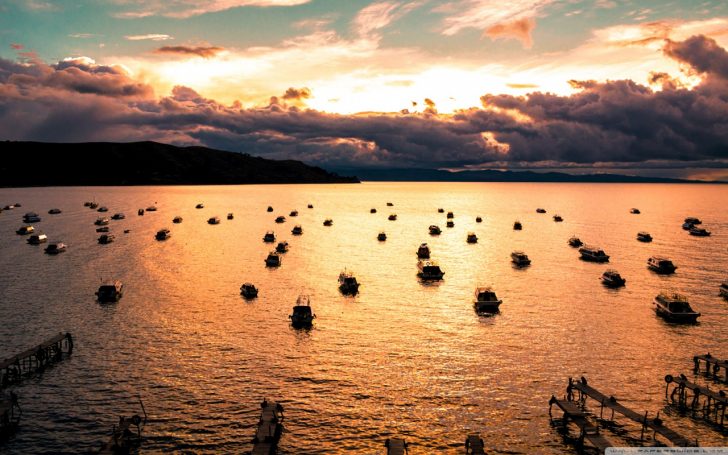
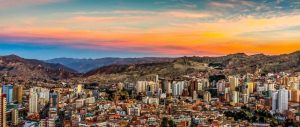
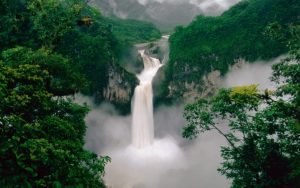
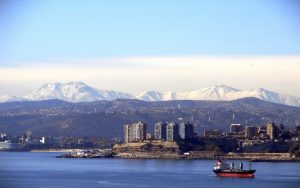
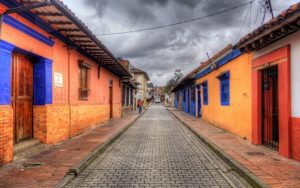
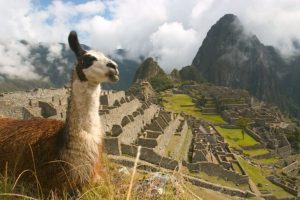
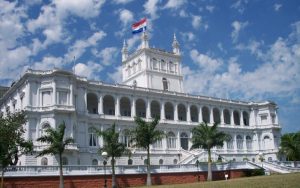
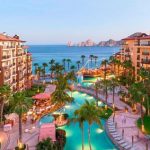
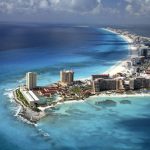
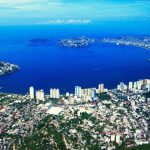
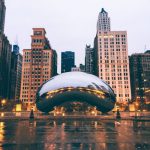
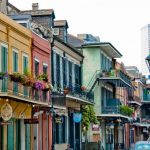
VISIT BOLIVIA
I am an American expat living in Bolivia. I have been here 6 years. I think the review in regards to crime is way too high. I feel far safer here than in any part of the US. Of course things happen here, just like in any other country. But violent crime is very low in comparison to any other country in South America, or even compared to the States. And I have never heard o tourists being kidnapped. Getting food poisoning is far more likely than any violent crime happening. The only real caution I would give is to avoid protests, as they are common. They rarely turn violent, but since most people are generally drunk at these protests, you can’t really predict a person’s actions.
I think this country is very underrated in regards to tourism. There is a ton to see and do here if you are a nature lover (biking the Death Road, the Uyuni Salt Flats, hiking Sajama, Huayna Potosi, or Illimani mountains, the dinosaur remains in Sucre or Toro Toro, the jungle in Rurrenabaque, Copacabana on Lake Titicaca, the colonial area of La Paz, Samaipata and Guembe near Santa Cruz, the wine area of Tarija, the colonial areas of Sucre and Potosi, the sand dunes and the flamingos near Oruro, and the cultural richness of the Chiquitania). It is also a very cheap place to visit, especially if you eat local (an expensive meal would be US$6-10). The only real concern a tourist should have is the fact that infrastructure is not very well developed and it can be a pain to get around. I DEFINITELY recommend Bolivia to tourists of all types.
Not accurate at all.
I completely agree. Bolivia does NOT have a medium level risk of terrorism, that´s ridiculous! Also never heard of tourist being kidnapped. Yes, as you should anywhere, you must be careful with your money, pay attention to your surroundings, but please do not fear violent crime on the street.
Bolivia is dangerous-you take a chance!
Camila is definitely incorrect and the warning should be medium high. You can get mugged or robbed in just about any area of the larger cities. Best to never travel alone especially at night.
THats really rude
this is a bit of a racial steryotype
Bolivia is dangerous but Uruguay is safe? This site is a joke.
Crispy Base
Had a pizza on the beach, very nice.
Bolivia is great !
My wife and l have traveled Santa Cruz , Sucre, Uyuni , La Paz and Rurrenabaque two separate times . We have done the pampas tours and the high altitude tours in Uyuni . We are always in by dark and settled down and have never seen nor experienced any crime while there for a month combing both trips .
Not saying crime doesn’t happen because it does in every country . We spent two weeks in Peru and never experienced anything but crime is there ,
I am super cautious of my surrounding no matter which country l go to and I’ve been to 20 countries . Even be super cautious l got distracted in Athens Greece and got my wallet stolen right out of my shorts front lower pockets and it was double buttoned . I never felt one thing until l started walking and l didn’t feel the wallet bumping on my leg as l walked 15 steps .
So l say if you want to visit Bolivia go but stay in good parts of town , beware of everyone around you , don’t start trouble just walk off and obey the country’s laws and you should be fine .
Bello Bolivia
Traveled to la Paz, Santa Cruz and Cochabamba. Never had a problem and I felt safe. We never stay out late when traveling so I can’t speak for that. My husband had issues with the high altitude and allergies but other than that we can’t complain. I only wore junk jewelry though. Lol Can’t wait to go back!